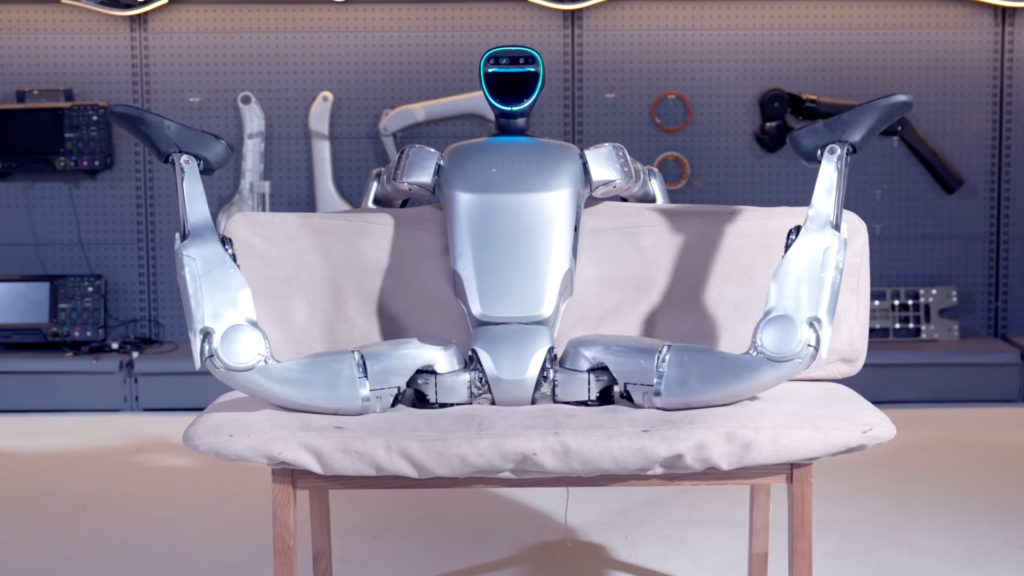What is going on in the tech industry right now? Less than a day after OpenAI debuted an uncomfortably flirty GPT-4o chatbot update, Unitree unveiled its new, $16,000 G1 Humanoid Agent, a bipedal robot contortionist that apparently specializes in bow staff combat, crushing nuts with its bare claws, and withstanding a barrage of abuse from its human creators.
G1 relies on a 360-degree LiDAR system to assess its environment and is capable of running roughly 4.5 mph (about the same speed as an average human jogging). Each robot contains between 23-43 degrees of joint motor freedom depending on model specifications, and is powered by a 13-string lithium rechargeable power source supporting an 8-core high-performance CPU for around 2 hours of battery life. Unitree’s announcement video also touts its “Unitree Robot Unified Large Model” (UnifoLM) for reinforcement and imitation learning, as well as over-the-air (OTA) feature updates.
All wiring is encased within G1’s torso and limbs, which cleans up the overall design and allows it to fold into a compact shape while powered off. This, coupled with an estimated weight of around 77 lbs, also makes it easier to carry around by handlers, if needed.
Impressive? Sure. But it’s hard to get around just how strange tech companies’ robot showcases are becoming. Almost a month ago, Boston Dynamics teased a successor to Atlas (RIP, beefy bot) that displayed similarly disquieting flexibility as the G1. Unitree’s new design looks strikingly similar to the torso-swiveling, roly-poly Boston Dynamics Atlas replacement, but somehow dives even deeper into the uncanny robotic valley in its less-than-two-minute demonstration video.
That’s certainly one way for the G1 to stand up. Credit: Unitree
Throughout the montage, viewers are subjected to a G1 brandishing a large staff, using its three-digit fists to crush walnuts into tiny bits, and karate chopping the top off of a Coke bottle—while wasting a decent amount of the spewing soda in the process. You’re also offered the apparently now prerequisite clip of a tech company’s robot subjected to an oddly clinical beatdown, this time involving standing kicks to the back and boxing glove punches to the chest. G1 is even shown trying to inflict damage upon itself by repeatedly striking one of its fingers with a hammer. And while, yes, it illustrates what the humanoid bot could hypothetically withstand in potentially dangerous work environments, it nevertheless remains perturbing to see again and again. Granted, G1 is also depicted engaged in more benign tasks like wire soldering and flipping a slice of bread in a cooking pan—but then there’s the gymnastics.
[Related: Oh good, the humanoid robots are running even faster now.]
Watching this new generation of (arguably too) flexible robots contort themselves into standing positions from the ground, splay themselves across chairs, and rotate their torsos 180-degrees to casually wave at someone doesn’t feel as friendly as earlier models did. And why would they? Combining humanlike body designs and routine human tasks with decidedly inhuman movements is literally the stuff of horror movies. Offering you crushed nut debris and a broken bottle’s worth of soda seems almost quaint in comparison.
But no matter how useful or flexible bipedal robots may become, the real worry isn’t how creepy they are getting with their somersaults—but which human jobs they are cartwheeling to replace.
>>> Read full article>>>
Copyright for syndicated content belongs to the linked Source : Popular Science – https://www.popsci.com/technology/unitree-g1-flexible-robot/
